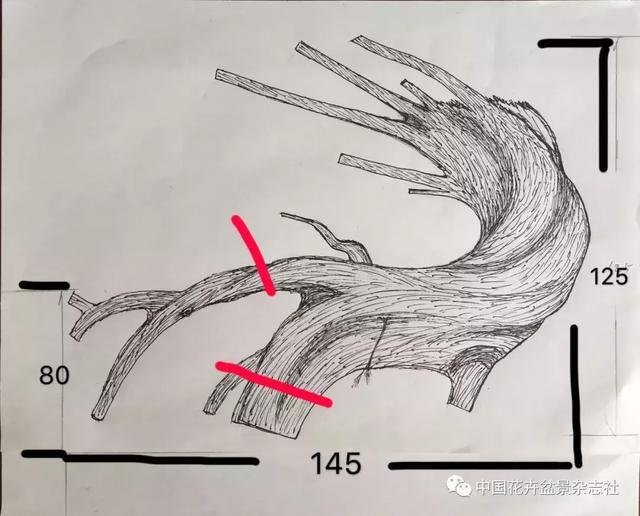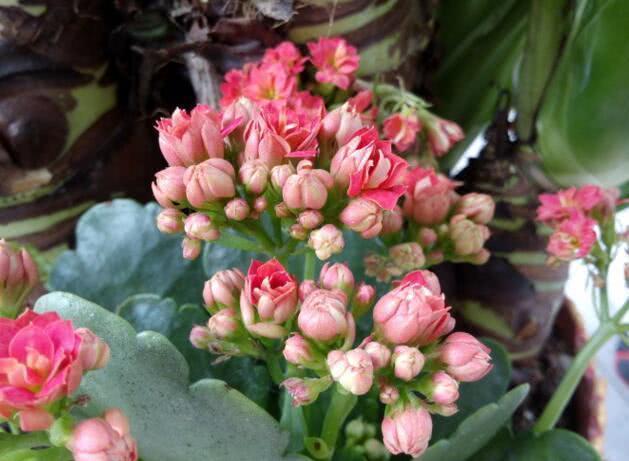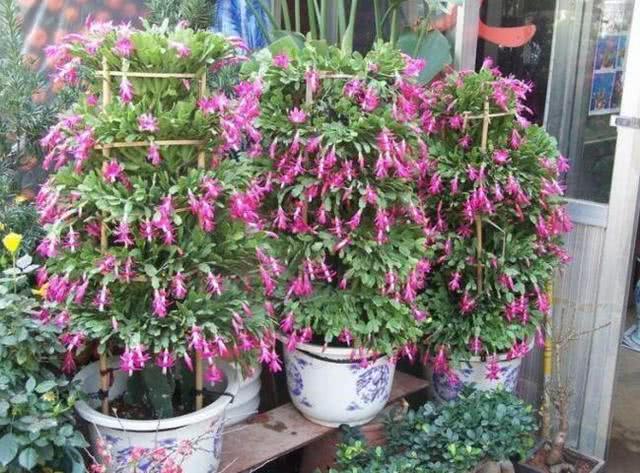The whole process of changing the styling of my Luohan pine bonsai "Qianfan"

Author: Wang Haiping / Photo
"there are a thousand sails passing by the sunken ship, and there are ten thousand strong trees in front of the sick trees. "with the help of these two poems, the poet Liu Yuxi told the story of his heart. He compared himself with a sunken boat and a sick tree. Although he was very melancholy, he was quite philosophical-there were thousands of sails racing on the side of the sunken boat. In front of the diseased tree, all the trees were spring. In fact, each of us needs the realm of thousands of sails and ten thousand trees in spring, and we named one of our own works of Luo Hansong "Qianfan".
Fig. 1 original pile of "Qianfan" (between the two on the left)
The original pile of "Qianfan" is the Luohan pine Qiu branch that was obtained from Xiapu, Fujian Province at the end of 2006. at that time, the stump had a hundred years of history, and I liked it very much in my heart. Coupled with the strength of its natural curve, the ancient simplicity highlighted a proud and heroic wind, vigorous and elegant, so I resolutely bought it. Pay attention to love wood bonsai and play with love wood bonsai.
The original pile of "Qianfan" is very large and has almost no leaves, but the cortex of the branches is very fresh and feels that it is possible to survive. There are almost no fine roots, only two thick roots. One base is about 10-20 cm in diameter, 60-70 cm long; one base is 5-6 cm in diameter, 40-50 cm long. There are only 1 or 2 extremely rare fine roots on the two thick roots. We are not sure whether we can let the coarse roots produce more fine roots, so we can only try.
Fig. 2 "Qianfan" is cultivated in a wooden box
The first step was to transport the original pile home, because there was no place to plant it, so I wrapped it in a sack, sprayed it with water, and put it indoors for half a month.
In the second step, I cut a wooden box with a width of 1.1 meters, a length of 1.5 meters and a depth of 0.4 meters and planted the original pile into it. The matrix is mainly composed of coarse sand, mixed with a little bit of loess, in order to fix the roots and retain water. When planting, because the root head (root tip) of the two thick roots are partially damaged or shriveled, so cut off 3cm to 5cm respectively to reveal the fresh part, in order to facilitate feeding. The incision is coated with yellow mud for anticorrosion.
Fig. 3 the original pile survived and new fine roots grew.
As for the parts that need to take root, I use the method of piercing the root skin to promote the root. The operation of picking skin is as follows: the knife edge is up, cut into the cortex, until it has just touched the xylem (that is, where the skin and xylem naturally fit), the broken root bark is half-moon-shaped, 1.5-2cm long, then lift the root bark slightly and plug it with a layer of yellow mud in the breach. It would be better if you can mix in a small amount of rooting powder. If the parts that need to take root are treated in this way, they can be planted. When planting, cover all the roots with the matrix, especially the broken part must be buried in the soil.
Fig. 4 New luxuriant roots
The third step is to immediately graft leaves on the leafless branches, which is a key step to ensure survival. As we all know, the leafless Luohan pine tree stump is bare, has no bud points, and does not send leaves on its own. Only when the leaves are attached immediately can the stump breathe and survive. At the same time, this is also a good time for grafting to change the crown. I grafted the chrysanthemum Luo Hansong (our local referred to as Chrysanthemum Luo). The cuttings are 10 to 20 centimeters long and the shortest is 5 to 6 centimeters. The chopsticks are thick and thin, and all the branches that go up in the middle of the trunk are connected by the method of skin grafting. After all the routine operation is completed, each grafting site is fixed with a nail so that it will not grow to push out the scion after survival. If the nail is buried in the future, it can be taken out after the full length of the scion is full-length.
Fig. 5 the thicker root bifurcation reaches 80 cm, which is not good-looking.
The fourth step is carefully cultivated after being planted in a wooden box. No fertilization within a year, only water, to ensure adequate light and appropriate temperature. Only after a year of vitality did we begin to apply very thin rotten rapeseed cake water, and then put the rapeseed cake pieces into a special plastic cover for fertilization and put a circle in the middle of the root and the basin (wooden box) wall, separated by a certain distance between the plastic cover. The reason why the emphasis is placed on the position between the root and the basin wall, rather than directly on the basin wall, is to prevent the root from growing too close to the basin wall, because the root will chase the fat. After such maintenance for 1 ~ 2 years, the original pile survived miraculously in the wooden box, the branches and leaves were also luxuriant, and there were many thin roots in the lower part, almost the thickness of the wire. Pay attention to love wood bonsai and play with love wood bonsai. But the shape of the main root is not very beautiful, especially the slightly thinner thick root, which is divided into two forks in the middle, which is 80 cm apart, which is very difficult to deal with. I tried to press the upturned end down, but in vain, I had to cut it off when I put it on the pot. The thick root is also short up to more than 20 centimeters. At the same time, too many thin roots were cut.
Fig. 6 treatment of pricking root bark
The fifth step is for the lack of roots, most people will choose to graft young trees to make up for it, but this will cause scars to the stumps and destroy their original sense of vicissitudes. Moreover, the stumps of hundreds of years old are not as vigorous as young trees. Grafting often causes infection and leads to the death of stumps. And I prefer to deal with it in a natural way. My method is still to break the root skin, the difference is that this time is not to promote rooting, but to shape the root disk. I observe the roots that have been cut short, and if there is a dent, choose a place close to the soil surface to pick off the root bark, the method is the same as above. Pay attention to love wood bonsai and play with love wood bonsai. The two places should not be too close to each other, so as not to destroy the waterline and affect survival. After taking root at the skin, take the opportunity of changing the basin to remove the covered soil, so that the new roots are exposed and naturally weathered. After a period of time, the original root is not only fuller, but also without scar. If you grow a new root, you can pick out the root bark and make it weathered. This is a little experience I fumbled when I was protecting Luohansong.
Figure 7 truncated the state of the main root
Step 6 after the above treatment, I began to put the original pile on the basin. Before putting on the pot, I trimmed the side branches to highlight the twisting and dynamic characteristics of the main pan. After trimming into the basin, the semi-recumbent curved trunk feels like a boat and mast, and the branches and leaves on the crown are like open sails, so there is the title of "Qianfan".
Fig. 8 pruning the root system before the upper basin
Qianfan set sail again with my hope. After potting, he nurtured it patiently for 2-3 years, and after the branches grew strong, they trimmed the shape again, and then observed the shape again. Repeat this for three or four years, just like the foolish Lord moved away from the mountain, little by little, step by step. After many times of pruning and shaping, the life of "Qianfan" is still so exuberant and strong, and the shape is slowly approaching the effect I expected. Pay attention to love wood bonsai and play with love wood bonsai.
Fig. 9 upper pot culture
After six months of rest and recuperation, the "Qianfan" in the basin basically recovered, so I planted it into my beloved petal-shaped purple sand basin and began to take a finer shape. This period of time is mainly based on the shape of branches. It took about 3 or 4 years to get such a strange, smooth and wonderful shape. Of course, it still has a long way to go before it finally matures.
The state before the viewing basin in figure 10
"Qianfan" accompanied me through more than ten years of mental journey. In the days when it was with me, I felt that every time I pruned and modeled it, it was a reshaping and baptism of my own spirit and will. In my opinion, the meaning of life lies not in the desire for comfort, but in constantly exploring the unknown in front of bonsai art, and in discovering how many beautiful stories behind bonsai art. I hope that like my "Qianfan", even if you encounter setbacks, you will still have a thousand sails and ten thousand trees in the spring.
Fig. 11 "Qianfan" has taken shape.
Original: "Chinese Flower Bonsai", authorized to release, reproduced, please indicate the source.
The best way to recognize love wood bonsai is to forward it.
The best way to love wood bonsai is to pay attention
Pay attention to love wood bonsai and play with love wood bonsai.
Click the blue "learn more"
- Prev

Miss Li raises longevity flowers just to add it. The basin is full of beautiful flowers.
Now people's life is getting better and better, the pursuit of the quality of life is higher, and flower green planting has been more and more deep into people's life, such as green pineapple, hanging orchid, tiger skin orchid, asparagus, wealth tree and other foliage potted plants have gone deep into people.
- Next

Longevity flower and crab claw orchid eat it in mid-September and New Year's Day will be in full bloom.
With the improvement of people's living standards, more and more people like to keep a pot of flowers at home, beautiful and warm, especially if there is a pot of flowers at home after autumn.
Related
- Wuhan Hospital Iron Tree Blooming Result Was Instantly Frightened by the Gardener Master
- Which variety of camellia is the most fragrant and best? Which one do you like best?
- What is the small blue coat, the breeding methods and matters needing attention of the succulent plant
- Dormancy time and maintenance management of succulent plants during dormancy
- Minas succulent how to raise, Minas succulent plant pictures
- What are the varieties of winter succulent plants
- How to raise succulent plants in twelve rolls? let's take a look at some experience of breeding twelve rolls.
- Attention should be paid to water control for succulent plants during dormant period (winter and summer)
- Watering experience of twelve rolls of succulent plants
- Techniques for fertilizing succulent plants. An article will let you know how to fertilize succulent plants.

